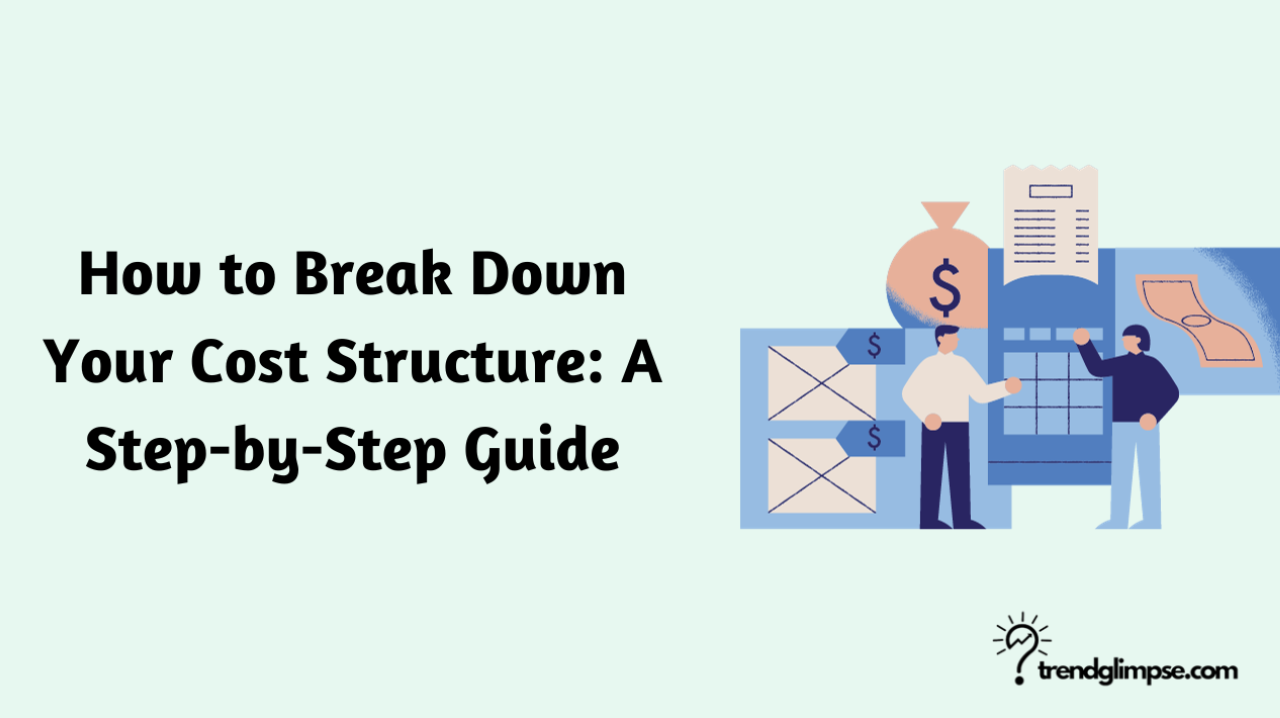Understand the Different Types of Costs in Your Business
Fixed Costs
When analyzing your business’s cost structure, first look at fixed costs – expenses that stay the same despite sales volume changes. For example, rent, insurance, loan payments, and salaries. Keeping these costs low and aligned to revenue is key. Walmart caps new store builds to control property costs. Regularly review essential fixed costs to trim excess where possible.
Variable Costs
Next, examine variable costs – expenses that fluctuate based on production volume. For example, materials, shipping, commissions. Understanding your variable costs per unit is vital to setting accurate pricing. Amazon closely tracks shipping expenses and optimizes logistics to minimize per order costs. Keep a close eye on variable costs per transaction to maintain desired profit margins as sales scale.
Categorize Your Costs
Group costs into fixed and variable
To effectively categorize costs, first carefully review each line item expense and determine whether it fluctuations based on volume (variable) or remains consistent regardless of fluctuations in activity (fixed). For example, determine if a cost like materials or commissions tends to increase or decrease directly with sales volume (variable) or if a cost like rent or insurance premiums remains static (fixed).
Determine direct and indirect costs
Next, assess which expenses can be cleanly tied to specific products or services (direct) versus which costs relate to overhead and operations for the business as a whole (indirect). For example, the cost of wood materials for building a chair would be a direct cost, while general administrative expenses like utilities and accounting fees take effort to allocate and are considered indirect. Keeping direct and indirect costs separate aids in determining precise profitability per product line.
Analyze Your Value Chain
Map out key processes and activities
Start by listing all the key processes in your business from start to finish. Break these down into more granular activities. For example, Starbucks maps out everything from sourcing coffee beans to serving customers in store. This mapping gives visibility into every cost driver no matter how small. Highlight the biggest cost areas as prime targets for cost reduction later on.
Identify costs associated with each process and activity
Go through each activity and note the associated costs – both direct and indirect. Keep costs grouped by activity rather than functional silos. For example ordering inventory has costs like procurement employee salaries and software systems. Ensure you capture overhead costs like utilities as well. Leading retailers like Walmart track costs to very specific activities, empowering targeted cost cutting initiatives without impacting quality or capabilities.
Use Cost Analysis Methods
Break Even Analysis
Conduct a break even analysis to determine the point where your business’s total revenue equals total costs. This shows the minimum output you must reach before generating profit. Successful examples are Amazon optimizing fulfillment centers despite upfront costs, knowing large volume would ultimately minimize unit costs below break even.
Target Costing
Set a target price based on customer demand and willingness to pay, then work backwards to reduce costs across production, R&D, supply chain logistics to hit those cost targets at required margins. Toyota pioneered this top-down cost analysis, leading to innovative just-in-time manufacturing and parts supply that cut waste.
Life-cycle Costing
Calculate costs across the entire lifecycle of a product, from R&D through after-sales service. This identifies cost reduction opportunities and focuses resource allocation more accurately. Companies like Apple master this, with high upfront R&D yielding products with large profit margins from recurring revenue over years of use.
Manage Your Cost Structure
Reduce Fixed Costs where possible
Reducing fixed costs where possible is key. For example, renegotiating long-term contracts to get better rates or downsizing office spaces can go a long way. Companies like Dell successfully cut costs by simplifying supply chains. Start by evaluating all major fixed expenses to find savings opportunities.
Keep Variable Costs aligned with revenue
Just as important is keeping variable costs aligned with revenue. If your sales double, ensure variable costs like raw materials don’t overinflate. Analyze how every variable cost scales with revenue growth. Salesforce efficiently manages variable costs through thorough budgeting and cost management practices. Periodically update variable cost analyses to account for changing market rates.
Update analyses periodically as costs change
Lastly, remember to periodically update your overall cost structure analysis. Costs tend to creep up over time or shift in unforeseen ways. Revisiting your cost breakdown quarterly or biannually helps spot issues early. Toyota excels at keeping costs low through continuous analysis and improvement. Even small cost changes can impact margins significantly when multiplied across product lines or time. Make regular cost structure reviews a habit.
Conclusion
Effectively analyzing your business’s cost structure is imperative for making strategic decisions and planning for profitability. By methodically grouping costs into categories of fixed or variable, and further dividing them into more specific buckets based on the business context, you gain visibility into where your money is going and how to shift spending.
With these cost allocation insights, business leaders can set targeted goals for cost reduction or rebalancing to favor growth-driving activities. Whether aiming to trim expenses or fuel expansion, a detailed cost structure perspective paves the way.

I have always been fascinated by the inner workings of companies and industries. So I decided to study business to explore it more. My goal is to take all my research and turn it into cool stories that give people a better understanding of the business world.

